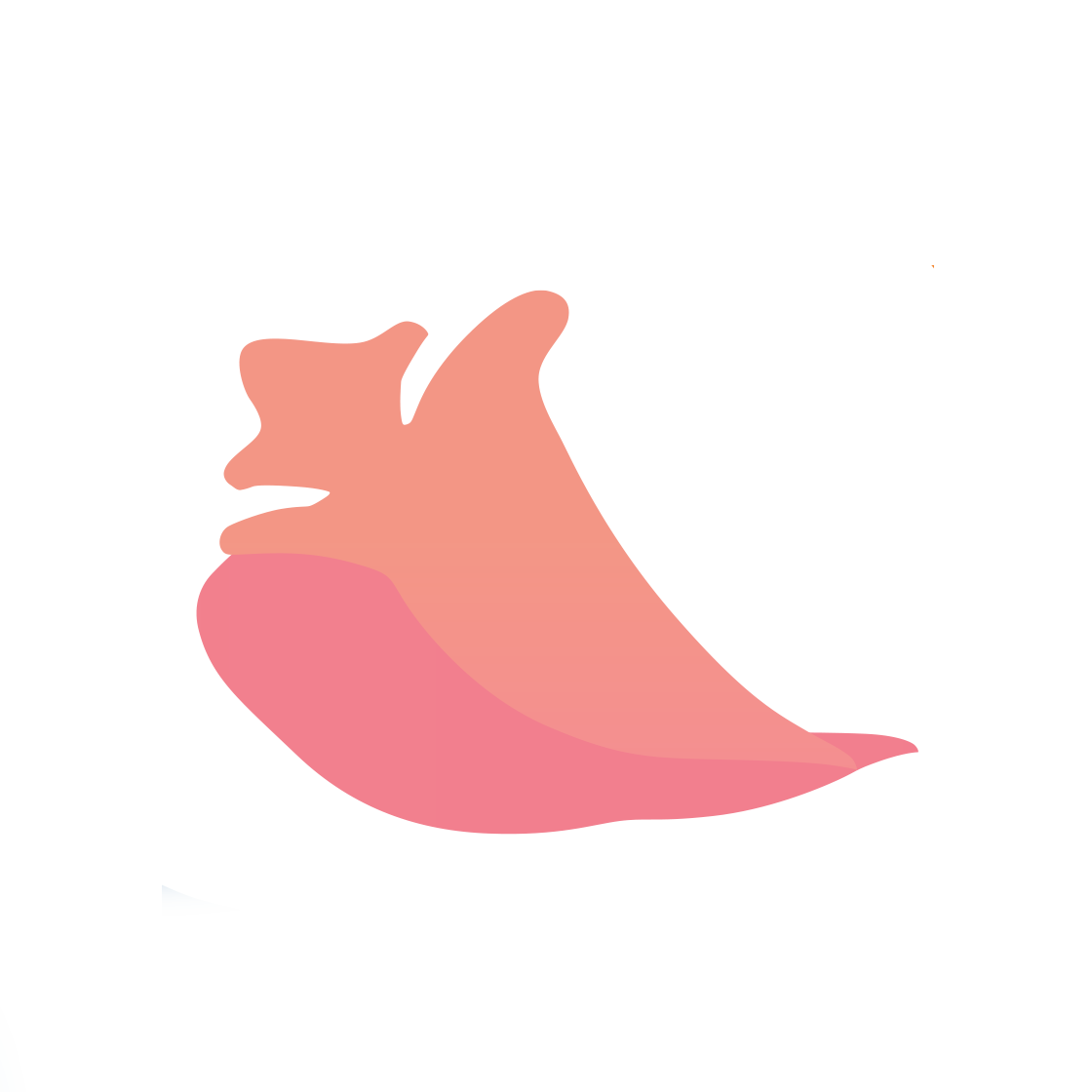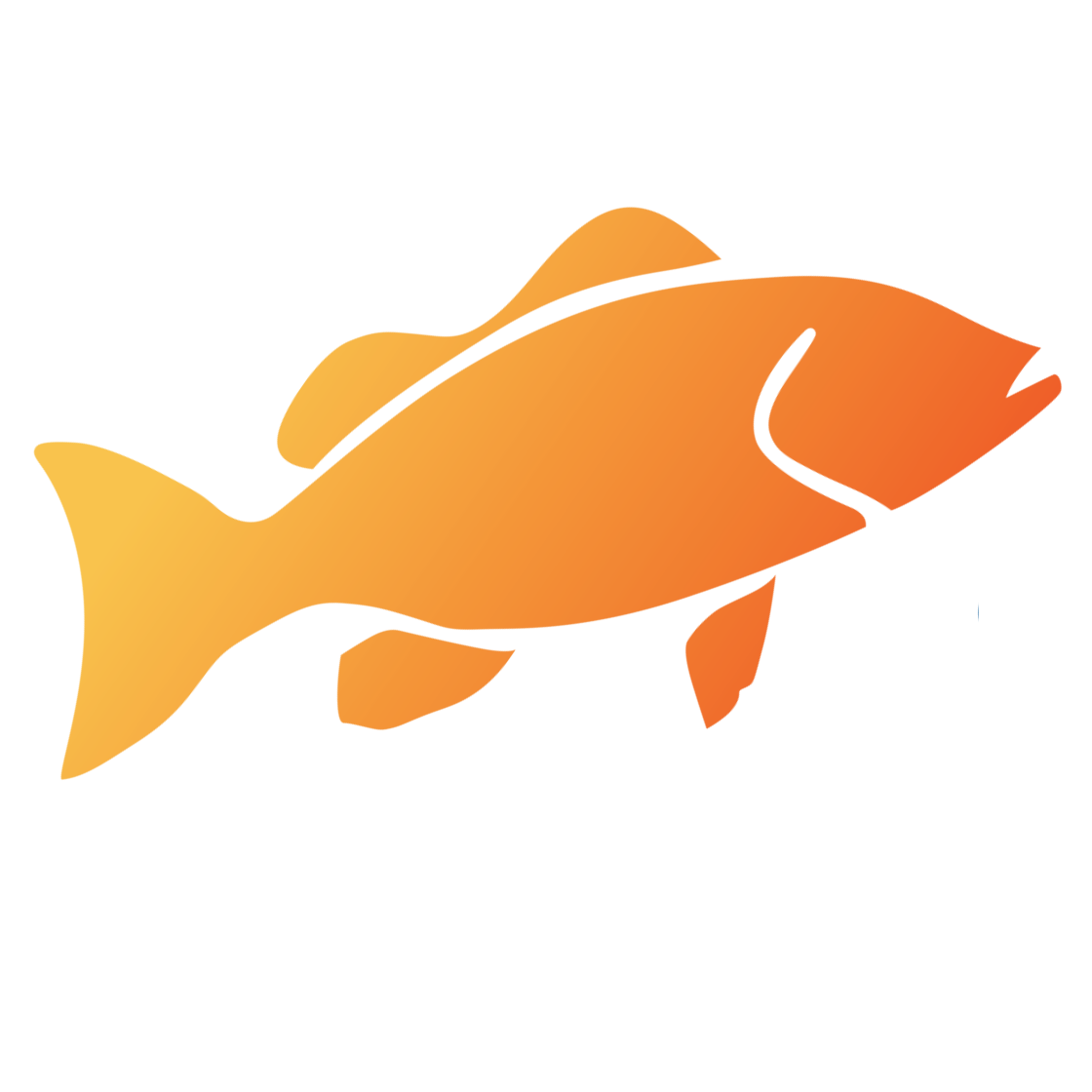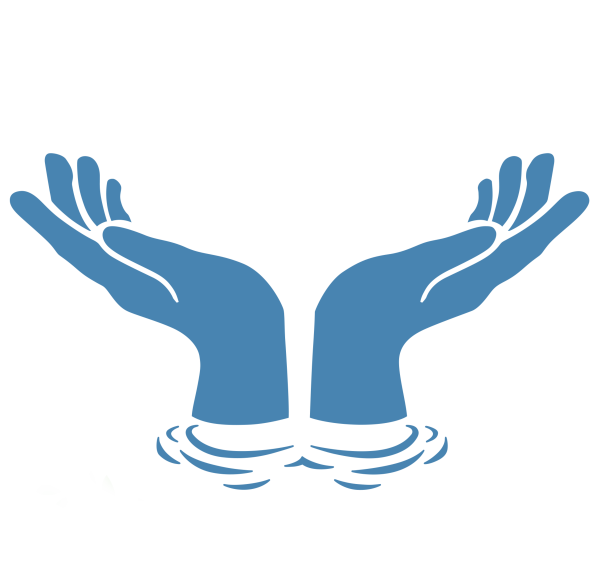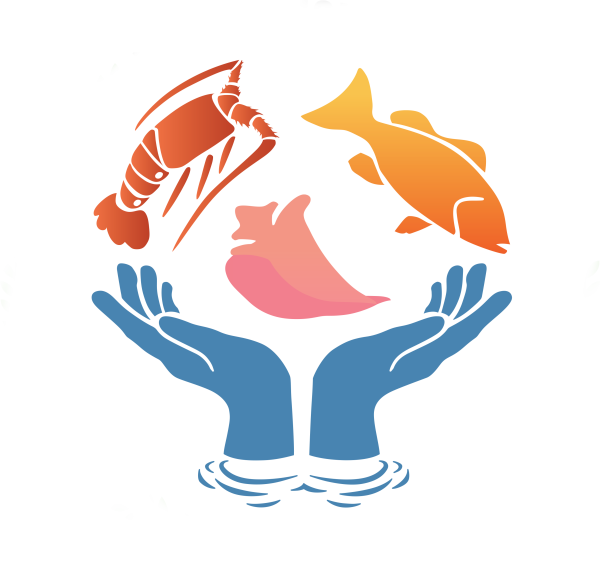The Ecosystem-based Management Unit (EMU) works under the same Mission of the Fisheries Department. However, the specific goal of the EMU is “holistic ecosystems management of aquatic resources through a marine reserve network and international commitments”. This marine reserve network involves monitoring for reef health, commercial species populations, seagrass and mangrove productivity and enforcement of the reserves and fisheries regulations. In order to accomplish its various objectives, the EMU conducts numerous specific activities through the marine reserves staff.
These activities involve visiting schools, fishing cooperatives and dive shops in order to inform stakeholders on best practices to sustainably use our aquatic resources. The reserves staff also conduct various programs that monitored reef health, fish populations, seagrass and mangrove productivity, visitation use and enforcement patrols. There are sixteen (16) strategic objectives that support the main goal of EMU.
"Holistic ecosystems management of aquatic resources"
Fisheries are collapsing worldwide due to over exploitation, bad management strategies, habitat destruction and climate change. Since the mid 1980’s, the Fisheries Administration decided that fisheries management in Belize should be through the ecosystems management approach. As a result, the Fisheries Department started to declare marine reserves as fisheries management tools. Studies of marine protected areas in tropical waters indicate that they can increase population size, increase average individual fish size, lead to the restoration of natural species diversity, and increase population reproductive capacity. Studies also indicate that subsequent spillover benefits to harvested areas outside and adjacent to closed areas often occur. Studies conducted at the Hol Chan Marine Reserve show that the lobster populations can be as high as 300%, fish biomass 300% and conch populations 600% higher inside the reserve than non-protected areas. Marine Protect Area goals are realised through:
- Deriving benefits from the tourist sector
- Mobilising financial and technical resources for the fisheries sector
- Supporting marine scientific research by providing a natural laboratory
- Enforcing regulations so that fishers benefit from an increase in fisheries products through the spillover effect and the capture of larger fish
Higher Populations
Well managed ecosystems foster biodiversity
Healthier and more plentiful fisheries for both fisherfolk and eco-tourists.
Click the Program Name to find out more details
EMU works toward sixteen (16) strategic objectives that support the unit’s main goal of adaptive data-driven sustainable management of aquatic resources.
+5012032623
Use < > arrows to review objectives
EMU Objectives
01-04- Enhance biodiversity by protecting undisturbed areas and expand replenishment zones
- Promote a sustainable fishery through ecosystems management especially by finalizing zoning legislation for those marine reserves that need adjustment and the rolling out of the managed access program
- Enforce the Fisheries Regulations by continuing coordination of enforcement exercises with CCU (Belize City and Punta Gorda), the Coast Guard and co-management partners
- Assist the other units [Policy, Planning Resource Mobilization and Environmental Stewardship (PPRMES) and Capture Fisheries Unit (CFU)] in data collection and manpower whenever necessary
EMU Objectives
05-08- Promote bio-prospecting through practical agreements with interested entities
- Fine tune the implementation of the marine reserves financing mechanism and the implementation of the National Protected Areas System Plan
- Prioritise research and monitoring geared towards the Mesoamerican Barrier Reef System Action Plan and the SICA/CRFM integration of regional management strategies for commercially exploited species
- Promote recreation via properly managed tourism. Under this thematic area, more mooring and marker buoys will be installed as the mooring buoy program is being revamped, nature trails upgraded, more signs will be erected and visitor centers upgraded
EMU Objectives
09-12- Maintain the Fisheries Department’s WEBSITE
- Assist DOE, PGD and other line agencies in conducting EIAs for development and dredging operations
- Maintain its membership commitments to the various committees, working groups and organizations
- Conduct environmental education to all user groups specifically to the fishers through a sensitization campaign coordinated with NPAS, Rare and WCS
EMU Objectives
13-16- Strengthen co-management agreements by encouraging more community participation
- Assist the National Emergency Management Organization in disaster preparedness and emergencies as well as search and rescue operations
- Continue the training for staff members in GIS, monitoring, research, proposal writing, marine protected areas management and data analysis
- Continue to deal with the obligations of the Fisheries Department with international commitments. These include CITES, CLME+, MBRS2, IOCARIBE, CMA2, ICRI, SPAW and OSPESCA
Recent
Marine Reserves Network
The Fisheries Department has a network of nine marine reserves that were enacted as fisheries management tools. The marine reserves are multiuse having a general use area (80%), conservation area (15%) and preservation area (5%). The reserves are found from the border with Mexico on the north to the border with Guatemala and Honduras in the south.
The benefits of the marine reserves are as follows:
- There has been an increase in spawning stock biomass providing greater replenishment;
- Spillover has enhanced local catches;
- There is insurance against uncertainty;
- Increase in predictability of catches;
- Reduced problems of multi-species management;
- Easier enforcement;
- Greater equity among fishers; and
- Greater public understanding of marine reserves management.
The Fisheries Department has nine marine reserves which has the following management arrangements

BCMR
Bacalar Chico Marine Reserve

HCMR
Hol Chan Marine Reserve

CCMR
Caye Caulker Marine Reserve
TAMR
Turneffe Atoll Marine Reserve

GRMR
Glovers Reef Marine Reserve

SWCMR
South Water Caye Marine Reserve

GS&SCMR
Gladden Spit and Silk Cayes Marine Reserve

PHMR
Port Honduras Marine Reserve

SCMR
Sapodilla Cayes Marine Reserve
Our Marine Ecosystems Help Protect and Sustain BELIZE. Learn More About Defending Our Marine Resources.
Conch Monitoring
Queen Conch, Strombus gigas, are surveyed for abundance and distribution by laying 10-30m by 2m belt transects on sites within the reserves during the closed and open seasons. Shell length is measured in mm from the tip of the spire to the notch opening. The width of the shell lip opening and the thickness of the shell lip are also measured. The data is then analyzed, compared to previous years and used in decision making. HCMR has the highest densities in both the closed and open seasons for both the General Use and Conservation Areas.
2014 - Conch Abundance Closed Season
2014 - Conch Abundance Open Season
Lobster Monitoring
Lobster surveys are conducted within the zones of the nine marine reserves (four shown below) during the open and closed seasons. Surveys are conducted by swimming and snorkeling for exactly ½ or 1 hour in one particular habitat, such as coral reef or seagrass beds. The lobster observed are visually categorized by carapace length in (mm) using a tickle stick and the numbers are recorded during the closed season and open season in both the General Use Areas and the Conservation Areas.
Other parameter recorded are sex, presence of egg or tar spot and carapace length.Data is also collected on lobster caught by fishermen. A sample of 200 lobsters are sampled monthly to collect morphometric data. Additional Information is also recorded such as boat name, area fished, gear type, time fishing, number of fishers on board and depth fished.
2014 - Lobster Abundance Closed Season
2014 - Lobster Abundance Open Season




Fin Fish Monitoring
Strictly fin fish monitoring is only conducted in the BCMR on beach traps that are set up for a period of six months per year. At the end of every week, the owner harvests the traps and the total poundage of each species is recorded.
2014 - Totals Harvested from Traps
+5012032623
Sea Turtle Nest Monitoring
Turtle nesting is monitored during the nesting season from June to November in all the marine reserves. When a nest is located it is dug in order to confirm that it is not a false nest. The date the nest is found is recorded along with an estimated hatching date. The team revisits the nest after it has hatch and the amount of emerged egg, undeveloped, unhatched, egg shells, and dead hatchlings in the nest are recorded.
2014 - Nesting Season
2010-2014 - Green Sea Turtle Nesting BCMR
2010-2014 - Hawksbill Sea Turtle Nesting BCMR
Public Education
Environmental education presentations and community public forums are regularly hosted by all the marine reserves throughout the year. Some events are held every year while some are catered upon special request by different institutions. The two most targeted stakeholders are the fishers and the tour guides as they have direct impacts on the resources on a daily bases.
Commercial Species Monitoring
Monitoring of commercial species is aimed at maintaining viable populations of those species. For a viable population the following is needed:
- The habitats needed by the species are preserved in an optimal state that continually provides adequate food and shelter;
- All adults are allowed to reproduce at least once in their life span;
- All juveniles are allowed to grow to maturity before being killed in a fishery;
- The un-harvested portion of the population is kept large enough to maintain genetic diversity.
Data is gathered at regular intervals using standardized methods in order to construct a data time series. Analysis of the data time series can reveal trends on whether a population is increasing, decreasing, or stable.
To monitor and analyze the viability of commercial species minimal data gathered includes:
- The habitats needed by the species are preserved in an optimal state that continually provides adequate food and shelter;
- All adults are allowed to reproduce at least once in their life span;
- All juveniles are allowed to grow to maturity before being killed in a fishery;
- The un-harvested portion of the population is kept large enough to maintain genetic diversity.




Synoptic Monitoring
The Synoptic Monitoring Program (SMP) was developed to answer questions on the health status of the reef and its associated habitats in order to assist in management decision making. The SMP is a long-term regional endeavor involving the countries of Belize, Guatemala, Honduras, and Mexico to gather data on key ecosystems and species in the Mesoamerican Region, in the short, medium and long-term for their sustainable use.
Spawning Aggregation Monitoring
Spawning aggregation monitoring is conducted by the Belize National Spawning Aggregation Working Group (BNSAWG) which was established in July 2001 in response to a nation-wide survey of spawning aggregations of the Nassau Grouper, Epinephelus striatis, which revealed very low numbers of spawning fish. Nassau Grouper are considered an endangered marine species under the IUCN red list and are known to be drastically decreasing throughout its range. Spawning aggregations sites are monitored by conducting visual surveysguided by the Reef Fish Spawning Aggregation Monitoring Protocol for the Mesoamerican Reef and Wider Caribbean. The monitoring is conducted at seven sites as regularly as possible which include: Rocky Pt. (Bacalar Chico Marine Reserve), Dogflea Caye (Turneffe Islands), Sandbore (Lighthouse Reef), Emily/Caye Glory, Gladden Spit (Gladden Spit and Silk Cayes Marine Reserve), Northeast Point (Glover’s Reef Marine Reserve) and Nicholas Caye (Sapodilla Cayes Marine Reserve). The objectives of the BNSAWG are:
- To manage, monitor and patrol spawning aggregation sites for the next five years, including monitoring the impact of use on the sites;
- To involve the stakeholders in monitoring, research, and patrolling of spawning aggregation sites;
- To create, house, and maintain a spawning aggregation database;
- To analyze the data and provide recommendations for the conservation, protection and sustainable use of the sites;
- To disseminate information for the education of all stakeholders;
- To utilize the information to advocate for and build support for the management, conservation, protection and sustainable use of the spawning aggregation sites;
- To support other initiatives that contribute to this general goal;
- To promote alternatives for the traditional users of spawning aggregation sites.
2014 - EIA Assistance
2014 - Spawning Aggregation Monitoring Exercise
| Month | Full moon | Org. | Site | Sampling period | Max Avg. Count (±S.D.) | #of Surveys |
| Jan | 15th | SEA | Gladden Spit | Jan21-‐23 | 49(max count) | 3 |
| BAS | Sandbore | Jan21-‐22 | 2950(±404) | 4 | ||
| BFD | Nicholas Cayes | Jan16-‐23 | 110(±70) | 2 | ||
| BFD | Rocky Point | Jan25-‐27 | 20(±7) | 2 | ||
| UB | Maugre Caye | Jan19-‐22 | 433(±195) | 4 | ||
| WCS | Northeast point Glovers | Jan20-‐23 | 1842(±263) | 4 | ||
| Feb | 14th | BAS | Sandbore | Feb18 | 62(±10) | 1 |
| BFD | Nicholas Cayes | Feb16-‐20 | 62(±14) | 3 | ||
| BFD | Rocky Point | Feb15-‐17 | 218(±25) | 9 | ||
| UB | Maugre Caye | Feb17-‐20 | 124(±28) | 4 | ||
| WCS | Northeast point Glovers | Feb20 | 400(±0) | 2 |
Environmental Impact Assessment
Personnel from the EMU play an important role on site visits which assessed national developments. The largest contribution is made on coastal and marine developments. Most of the coastal development site visits are concentrated on development suitability, dredging operations, pier constructions and grounding damage assessments. The Fisheries Department is invited to various site visits or is requested to conduct an independent evaluation for various government agencies.
2014 - EIA Assistance
Witnessed Illegal Fishing Activities?
Misuse of fisheries resources affects livelihoods, families, communities and industries.
Report Fisheries Violations
Enforcement
Enforcement of the reserves regulations is primarily conducted by the reserve staff specifically the rangers. In order to capitalize on manpower, all reserves staff are declared Fishery Officers including co-manager personnel, and are trained intensively on enforcement procedures and protocols. To further strengthen the enforcement capabilities the reserves staff are established as Police Special Constables. To maximize results patrols are prioritized especially on illegal activity hotspots and are designed to intercept marine products onboard fishing vessels and campsites.
The Conservation Compliance Unit (CCU) personnel assist the marine reserves by providing various officers to cover for personnel on vacation, sick leave and training thus continuing the enforcement presence. Joint enforcement patrols are also conducted by the EMU, CCU, the Belize Coast Guard, Port Authority and other enforcement agencies. The Belize Coast Guard and the Police Force are mandated by law to enforce the Fisheries Regulations. Once these two agencies make arrests on fisheries infractions, the persons arrested are handed over to the Fisheries Department for prosecution. The Fisheries Department has in-house prosecutors who take the cases before the courts.
possession
possession
possession
fisherfolk · vessel
possession
2010-2014 - Infractions by Reserve
2014 - Marine Reserve Infraction Composition
Aquarium Fish
There are only three companies licensed to collect and export aquarium fish. These companies are periodically checked that they are complying with the exclusion of specified species (commercial species, parrot fish, blue tangs, bonefish, tarpon, permit, spiny sea urchin and corals). These exporters harvest the aquarium species from the Turneffe Atoll and along the Belize Barrier Reef on designated areas. Spot checks are also conducted at sea during collection and at the international airport at the time of shipping. Figure 14 shows that Marine Life Belize had the highest exportation of invertebrates and Tropical Fish Investments the highest exportation of fish. The aquarium fish fishery is very small and sustainable.
2014 - Aquarium Fish Production
2014 - Aquarium Invertebrate Production
Research Licensing
Research in Belize is conducted on corals, fish, invertebrates, turtles, algae, ecosystems and socio-economic impacts on communities. Researchers are affiliated with the Smithsonian Institute, Wildlife Conservation Society, Boston University, University of Belize and various other independent universities. Fish research had the highest number of permits in 2014.
2014 - Research Permits
Marine Reserve Visitation
Tourists continue to visit all the marine reserves due to high biodiversity as a result of adequate management. In 2014, a total of 118,835 tourists visited the Hol Chan Marine Reserve having the highest number 74,386 or 63 %.
2014 - Marine Reserve Tourist Visitation
Regulations, Educational, and Technical Resources are available for review and download.









